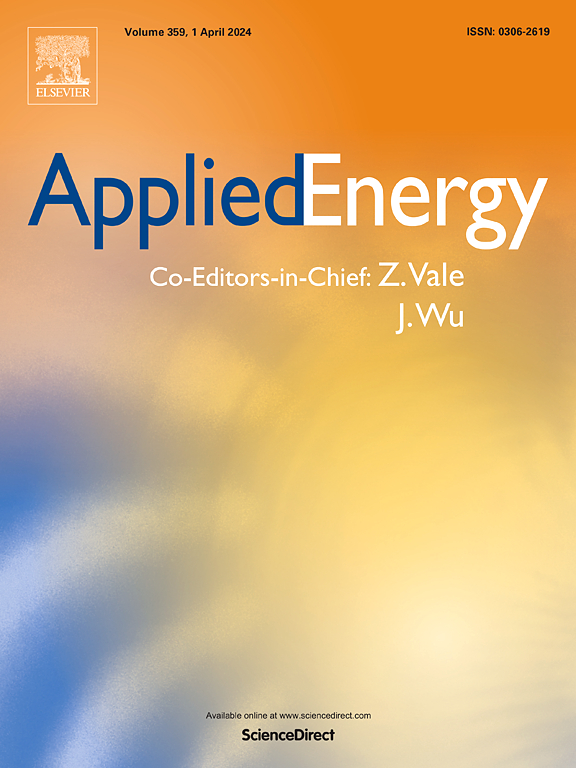Provincial allocation of China's commercial building operational carbon toward carbon neutrality
IF 10.1
1区 工程技术
Q1 ENERGY & FUELS
引用次数: 0
Abstract
National carbon peak track and optimized provincial carbon allocations are crucial for mitigating regional inequality within the commercial building sector during China's transition to carbon neutrality. This study proposes a top-down model to evaluate carbon trajectories in operational commercial buildings up to 2060. Through Monte Carlo simulation, scenario analysis is conducted to assess carbon peak values and the corresponding peaking year, thereby optimizing carbon allocation schemes both nationwide and provincially. The results reveal that (1) the nationwide carbon peak for commercial building operations is projected to reach 890 (± 50) megatons of carbon dioxide (MtCO2) by 2028 (± 3.7 years) in the case of the business-as-usual scenario, with a 7.87 % probability of achieving the carbon peak under the decarbonization scenario. (2) Significant disparities will exist among provinces, with Shandong's carbon peak projected at 69.6 (± 4.0) MtCO2 by 2029, approximately 11 times higher than Ningxia's peak of 6.0 (± 0.3) MtCO2 by 2027. (3) Guided by the principle of maximizing the emission reduction potential, the optimal provincial allocation scheme reveals the top three provinces requiring the most significant reductions in the commercial sector: Xinjiang (5.6 MtCO2), Shandong (4.8 MtCO2), and Henan (4.7 MtCO2). Overall, this study offers optimized provincial carbon allocation strategies within the commercial building sector in China via dynamic scenario simulations, with the goal of hitting the carbon peak target and progressing toward a low-carbon future for the building sector.

求助全文
约1分钟内获得全文
求助全文
来源期刊

Applied Energy
工程技术-工程:化工
CiteScore
21.20
自引率
10.70%
发文量
1830
审稿时长
41 days
期刊介绍:
Applied Energy serves as a platform for sharing innovations, research, development, and demonstrations in energy conversion, conservation, and sustainable energy systems. The journal covers topics such as optimal energy resource use, environmental pollutant mitigation, and energy process analysis. It welcomes original papers, review articles, technical notes, and letters to the editor. Authors are encouraged to submit manuscripts that bridge the gap between research, development, and implementation. The journal addresses a wide spectrum of topics, including fossil and renewable energy technologies, energy economics, and environmental impacts. Applied Energy also explores modeling and forecasting, conservation strategies, and the social and economic implications of energy policies, including climate change mitigation. It is complemented by the open-access journal Advances in Applied Energy.
 求助内容:
求助内容: 应助结果提醒方式:
应助结果提醒方式:


